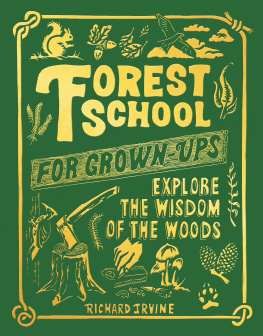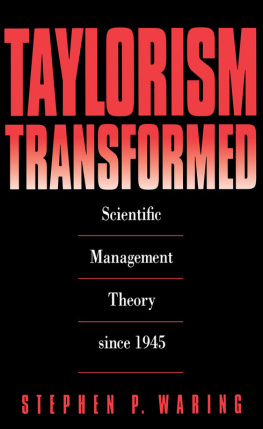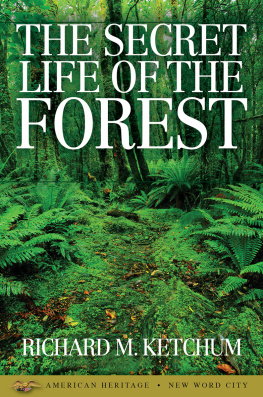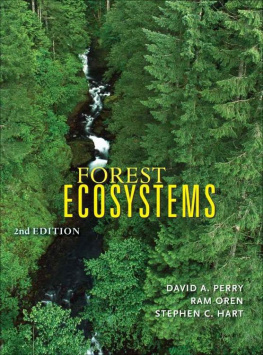Waring Richard H - Forest Ecosystems
Here you can read online Waring Richard H - Forest Ecosystems full text of the book (entire story) in english for free. Download pdf and epub, get meaning, cover and reviews about this ebook. year: 2007, publisher: Elsevier Science, genre: Romance novel. Description of the work, (preface) as well as reviews are available. Best literature library LitArk.com created for fans of good reading and offers a wide selection of genres:
Romance novel
Science fiction
Adventure
Detective
Science
History
Home and family
Prose
Art
Politics
Computer
Non-fiction
Religion
Business
Children
Humor
Choose a favorite category and find really read worthwhile books. Enjoy immersion in the world of imagination, feel the emotions of the characters or learn something new for yourself, make an fascinating discovery.

- Book:Forest Ecosystems
- Author:
- Publisher:Elsevier Science
- Genre:
- Year:2007
- Rating:5 / 5
- Favourites:Add to favourites
- Your mark:
- 100
- 1
- 2
- 3
- 4
- 5
Forest Ecosystems: summary, description and annotation
We offer to read an annotation, description, summary or preface (depends on what the author of the book "Forest Ecosystems" wrote himself). If you haven't found the necessary information about the book — write in the comments, we will try to find it.
Forest Ecosystems — read online for free the complete book (whole text) full work
Below is the text of the book, divided by pages. System saving the place of the last page read, allows you to conveniently read the book "Forest Ecosystems" online for free, without having to search again every time where you left off. Put a bookmark, and you can go to the page where you finished reading at any time.
Font size:
Interval:
Bookmark:
- Tables in Chapter 1
- Tables in Chapter 2
- Tables in Chapter 3
- Tables in Chapter 4
- Tables in SECTION II
- Tables in Chapter 5
- Tables in Chapter 6
- Tables in Chapter 7
- Tables in Chapter 8
- Tables in Chapter 9
- Tables in Chapter 10
- Figures in Chapter 1
- Figures in Chapter 2
- Figures in Chapter 3
- Figures in Chapter 4
- Figures in SECTION II
- Figures in Chapter 5
- Figures in Chapter 6
- Figures in SECTION III
- Figures in Chapter 7
- Figures in Chapter 8
- Figures in Chapter 9
- Figures in Chapter 10
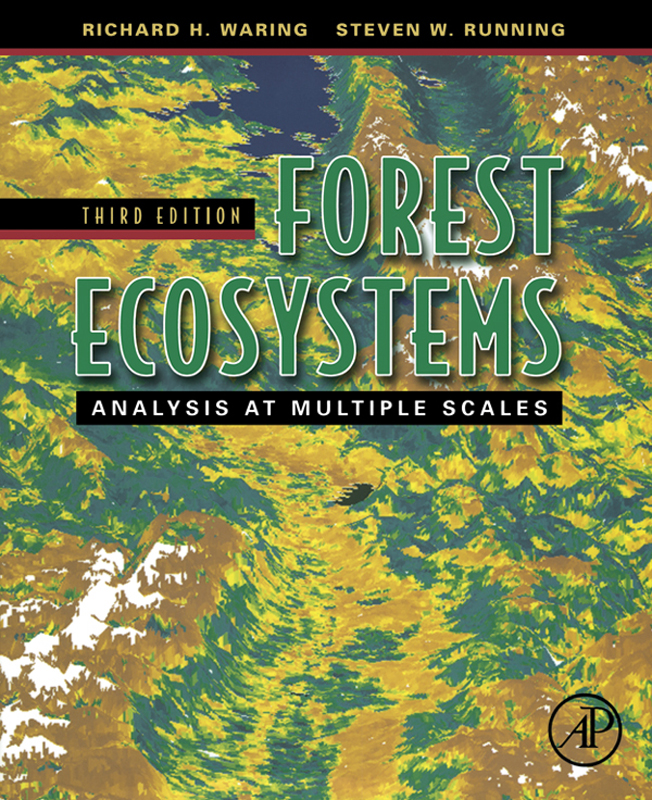
Third Edition
Richard H. Waring
Department of Forest Science, Oregon State University Corvallis, Oregon
Steven W. Running
Department of Ecosystem and Conservation Sciences, Numerical Terradynamic Simulation Group University of Montana Missoula, Montana
Academic Press
With notification that the second edition of Forest Ecosystems was out of print, we considered whether a complete revision of the text was warranted. We recognize that the modeling of forest ecosystem responses has increased significantly in the last decade to include biodiversity and climatic limitations, but the underlying principles presented in the second edition appear to remain sound. At the same time, the network of sites that continuously monitor seasonal and interannual variation in CO2 and water vapor exchange has grown. By combining data from many sites, new generalities have emerged that should be shared. Also, we wished to illustrate that forest disturbance and recovery can be more accurately documented than was previously possible. Finally, with the publication of the 2007 reports by the Intergovernmental Panel on Climate Change, we recognize the pressing need to provide background material to policy makers charged with designing policies that reduce carbon emissions and perpetuate healthy forests in an unstable climate with new mixtures of species.
that focuses on new information. Specifically, we document in the added chapter how climatic change has already affected forests, offer insights gained from an expanded network of eddy-flux sites, and provide evidence of improvements in remote sensing technology. To keep up with the expanded role that remote sensing and modeling will play in predicting and monitoring the effects of future policies, we provide a web site reference to replace the compact disc available with the previous edition.
R. H. W.
S. W. R.
The first edition of Forest Ecosystems: Concepts and Management, with my colleague William Schlesinger of Duke University, was published in 1985. At that time, most of the information on forest ecosystems consisted of mass balance analyses conducted on stands or small watersheds for periods up to one year. Few simulation models were available, and those that could be tested were largely restricted to predictions of streamflow. Today, new methods and new models provide a much wider basis for extrapolation, in space as well as time. In 1991 and again in 1997, William Schlesinger demonstrated his unique abilities to synthesize and expand our understanding of terrestrial and aquatic ecosystems by publishing Biogeochemistry: An Analysis of Global Change.
The opportunity to expand the scope of analysis of forest ecosystems was clear. Such an expansion, however, required new techniques and experience beyond those possessed by either author of the first edition. With my colleagues support, I sought a new coauthor with experience that extended to the global scale. The person with the most noteworthy experience in scaling the analysis of forest ecosystems was Steven Running at the University of Montana. To my pleasure, he agreed to join me in the endeavor of writing a major revision of the first edition that emphasized quantitative modeling and extrapolations across large spatial and time scales.
A broadened perspective of management is essential today. The pressing issues include regional and global analyses of biodiversity, changes in climatic cycles, implications of wide-scale pollution, and the possibility of fire, floods, insect out-breaks, and other major disturbances that extend beyond the limits of political boundaries. Organizing the principles and providing examples for expanding the horizon of ecosystem analyses were the challenges in writing the new edition. From our own experience in teaching graduate and undergraduate courses, we recognize the difficulty in presenting material that crosses many fields, but the success of expanded integration and problem analysis lies in acquiring new methods and concepts. To that end we have made an attempt to define terms and to explain concepts in a variety of ways by providing equations, graphs, and tabular examples.
Many critical facets of ecosystem behavior, as well as future changes in the environment, remain unknown. Perhaps the best we can do is to distinguish those processes that have a firm basis for analysis from those that require more research. The search for principles that scale, matched with appropriate methods, will be required, regardless of the quest. We hope that students, faculty, research scientists, and managers of natural resources will gain confidence in their abilities to predict and to monitor the implications of various changes. We encourage concern about the long-term implications of policies, in the hopes that the alternatives considered will sustain ecosystem processes to which many organisms contribute, and on which all life depends.
R. H. Waring
Our challenge and reasons for writing this book are to share an emerging insight that there are key linkages between the processes that operate in forests. We emphasize forests in this book because we know them best and because their long life permits us to evaluate the effects of periodic disturbance more readily. Our examples, most often, are drawn from simple cases in which principles are more easily seen and explained. We believe, however, the principles apply widely, as we show in predicting transpiration and other hydrologic properties for a variety of forests in differing climatic settings.
In many cases, scientists cannot accurately predict the effects of acid rain, fire suppression, short-rotation timber harvest, or increasing carbon dioxide levels in the atmosphere on forests or other ecosystems. We believe a diagnostic approach linking a variety of processes is warranted and that with carefully designed experiments the mysteries will unravel.
We have striven to provide a cosmopolitan flavor to the book. Because most experimental work has been focused on rather simple systems, our examples are drawn mainly from temperate and boreal forests. However, the same processes operate in more complex forests, as references denote. The book is written for upper-level students with some background in general ecology, inorganic chemistry, physics, and plant physiology. We hope that specialists will see new implications to their work and be encouraged to develop integrative experiments. Managers of forest resources (wood products, wildlife, and water) will find explanations for some of their observations and predictions of the effects of various management policies.
Font size:
Interval:
Bookmark:
Similar books «Forest Ecosystems»
Look at similar books to Forest Ecosystems. We have selected literature similar in name and meaning in the hope of providing readers with more options to find new, interesting, not yet read works.
Discussion, reviews of the book Forest Ecosystems and just readers' own opinions. Leave your comments, write what you think about the work, its meaning or the main characters. Specify what exactly you liked and what you didn't like, and why you think so.

